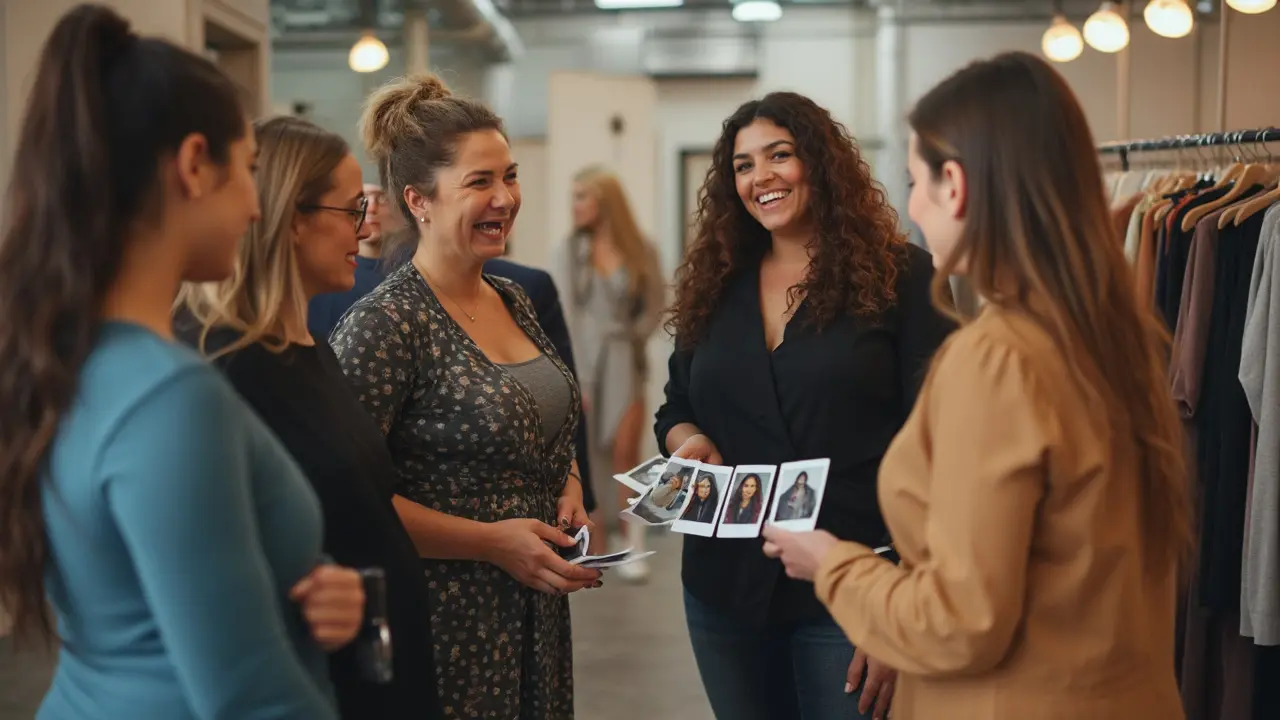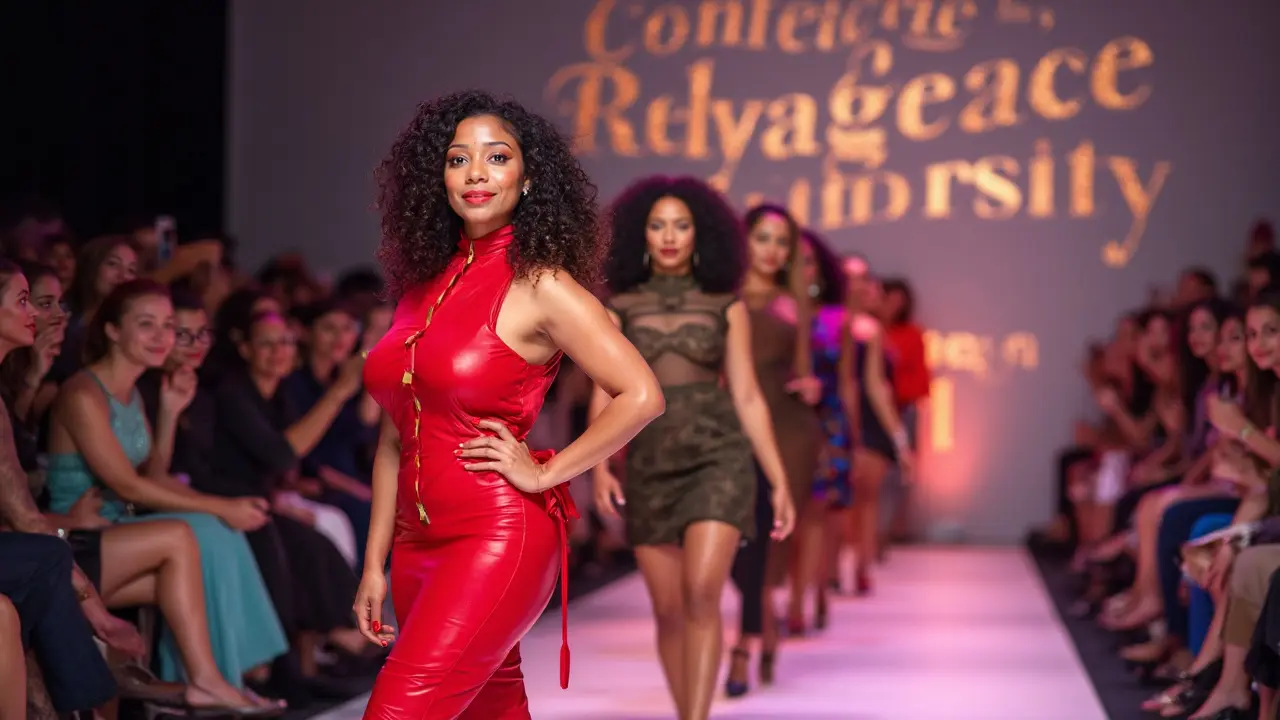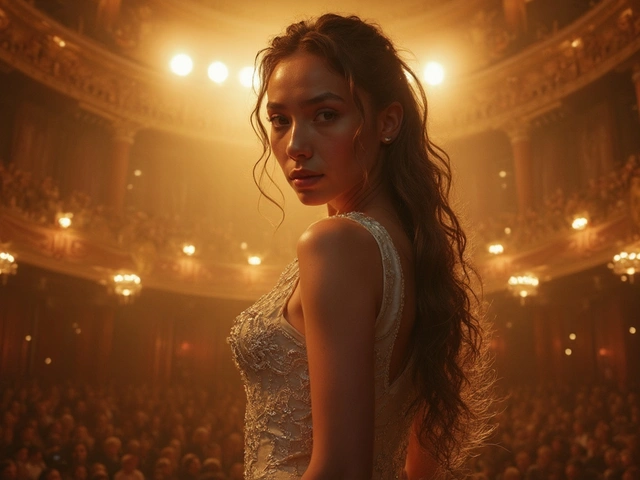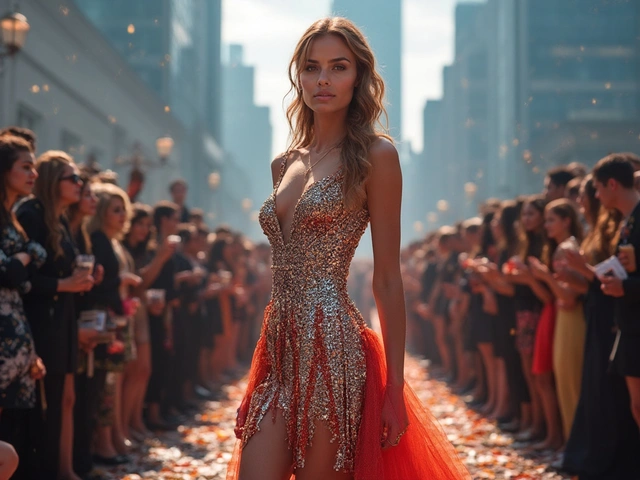Forget everything you thought you knew about the modeling world—the old idea that you have to be a size zero to make it has been blown out of the water. These days, curvy models are owning the spotlight and proving that style isn't a one-size-fits-all thing. Big brands and runways finally figured out that real people want to see bodies like their own in fashion, not some impossible ideal.
If you ever felt like you didn’t fit in just because of your body shape, you’re not alone—but things have changed, and it’s about time! The shift toward body positivity is more than just a hashtag; it’s changing lives and opening doors for talented people of all sizes. More agencies, designers, and campaigns are featuring curvy models who look healthy, confident, and absolutely at ease in their skin. The best part? This isn’t some limited trend; it’s here to stay.
- Key Facts About Curvy Models
- What Exactly Is Curvy Modeling?
- Why Curvy Models Matter in Fashion
- Styles and Types of Curvy Modeling
- Getting Started as a Curvy Model
- Common Questions About Curvy Models
Key Facts About Curvy Models
Let’s get real about curvy models—this isn’t fringe stuff anymore. The modeling world is recognizing that beauty and talent come in every shape. In fact, when someone mentions a curvy model these days in a fashion conversation, they’re often talking about someone who’s helping redefine an entire industry. Here are some facts that really stand out:
- Curvy models typically wear clothing sizes 12 and up (US sizing), though it’s the confidence and presence that count way more than any number on a tag.
- Top modeling agencies like IMG, Ford Models, and Wilhelmina now have specialized divisions just for curvy talent. That means representation is now legit, not just an afterthought.
- Names like Ashley Graham, Paloma Elsesser, and Precious Lee have landed on the covers of Vogue, Harper’s Bazaar, and walked for designers like Versace and Michael Kors. Big labels are noticing and investing.
- The term “plus-size” was used a lot before, but now “curvy” and “full-figured” are common because the focus is more on the natural shape rather than simply size.
- With the rise of social media, especially Instagram and TikTok, many curvy models are growing massive followings—even bigger than traditional runway stars—and using their platforms for real talk about self-love and style.
Here’s a quick snapshot of some stats to put things in perspective:
| Fact | Details |
|---|---|
| Average US woman's size | 16-18 (source: CDC, 2023) |
| Curvy/plus-size models in campaigns (2024 top brands) | Over 28% of major fashion ads included curvy models |
| Social media reach for top curvy models | 5-20+ million followers per top model |
| Growth in curvy modeling jobs since 2018 | Up by 62% (based on agency job data) |
So yeah, curvy models aren’t just a side note anymore—they’re front and center, breaking old molds and showing the world that beauty is seriously diverse.
What Exactly Is Curvy Modeling?
Curvy modeling is about representing folks whose bodies don’t fit the traditional thin fashion standard. We’re talking about models who wear a size 8 or up in the US (that’s about a size 12 or more in the UK). The main thing here isn’t just having curves—it’s showing confidence and personality while breaking old ideas about beauty. Curvy models show there isn’t just one way to look good in clothes or on camera.
Unlike the old-school modeling scene where everyone had to fit super specific size charts, now agencies and brands actually look for people with fuller hips, natural curves, and all sorts of body types. Even the big names—like Ashley Graham, Paloma Elsesser, and Tess Holliday—have paved the way, landing major magazine covers and campaigns for brands that once only hired super-skinny models. That never really happened before 2015, so the shift is pretty dramatic.
Here’s what you’ll usually see with curvy models today:
- They typically work with plus-size fashion brands, lingerie companies, swimwear campaigns, and even mainstream designers looking to show more realistic body shapes.
- Their job isn’t just about looking a certain way. Authenticity and confidence are just as important as size or measurements.
- You’ll spot them in print ads, online stores, commercials, fashion shows, and sometimes even high-profile runway events like New York Fashion Week.
It’s not about fitting into a single mold. Instead, curvy modeling says, "Yeah, you can have hips, thighs, and a fuller figure, and still be stylish and in demand." It’s breaking down stereotypes and helping the next generation see themselves as worthy of representation—both on the runway and in everyday life.
Why Curvy Models Matter in Fashion
Fashion used to send one message: thin was in. But pushback from the public and real, everyday shoppers changed the game. When curvy models started walking major runways—like Ashley Graham at New York Fashion Week—it made headlines and sent a statement: clothes should look good on everyone, not just a tiny group. Glance at almost any big brand today—like Savage X Fenty, Old Navy, or Nike—and you'll see curvy bodies right there in ads, not just tucked away in the background.
Here's the thing: nearly 68% of American women wear a size 14 or above, according to a 2016 study from Plunkett Research. So, why show only size zeros? When brands include curvy models, shoppers trust the brand more because they see someone who looks like them. That emotional connection pays off—brands with more inclusive fashion ads actually sell more, especially online. The main keyword, curvy models, now brings entire communities together on social media, making self-confidence more normal than rare.
And it's not just about selling more clothes. Seeing diverse body types—different ages, backgrounds, and abilities—changes how people think about themselves. Body positivity isn’t just a buzzword; it helps people feel seen and accepted. Go scroll your Instagram feed and you'll spot dozens of curvy influencers working with top labels, hosting body positive campaigns, and shutting down old-school beauty standards. For anyone who’s ever felt left out by fashion, this is a real shift.
Why does this matter for the industry itself? Easy: when brands go inclusive, they stop missing out on huge, paying audiences. Fashion gets a bigger slice of the market and makes customers feel like they belong at the party. Most importantly, curvy models give the next generation role models who prove beauty has no size limit.

Styles and Types of Curvy Modeling
You’d be surprised at how many different lanes curvy models can work in—it’s way more than just catalog gigs and online ads. If you’re picturing runway shows, high fashion shoots, commercial campaigns, and even fitness spreads, you’re on the right track. Brands are finally getting that people want to see all kinds of bodies out there, so there’s a place for everybody, literally.
- Runway Modeling: Big names like Christian Siriano and Savage X Fenty don’t shy away from curvy models in their fashion shows. These brands put all shapes and sizes on the catwalk, and the crowd loves it. It’s proof that style and confidence rule the runway—not waist size.
- Commercial Modeling: Think about ads for clothing stores, lifestyle brands, or even car companies. Most commercial campaigns need models who feel relatable, and that's made curvy models pretty much essential. This area offers loads of opportunities, especially for those just starting out.
- Editorial/Print Modeling: If you’ve seen magazines like Vogue, Elle, or Glamour featuring models with curves, you’re seeing this type of work in action. These shoots aim for a high-fashion vibe while breaking the old-school mold of what’s "in."
- Swimwear and Lingerie: Major brands (Aerie, Torrid, and Savage X Fenty, for example) use curvy models front and center in their campaigns. The body positivity message is huge here; people are tired of only seeing airbrushed, impossible standards in these ads.
- Plus-Size Fitness Modeling: Yep, you read that right. Brands like Nike and Adidas have featured curvy models in activewear ads. These gigs show that being healthy and active doesn’t have a single look.
Curious how the breakdown looks in the industry? Here’s a quick peek at where curvy models find the most jobs these days:
| Modeling Type | Common Opportunities | Popular Brands/Platforms |
|---|---|---|
| Runway | Seasonal Fashion Weeks, Brand Launches | Christian Siriano, Chromat |
| Commercial | Ads, Billboards, Social Content | Target, Old Navy, Lane Bryant |
| Editorial/Print | Magazine Features, Brand Promotions | Vogue, Elle, Glamour |
| Swimwear/Lingerie | Catalog Shots, Online Stores | Swimsuits For All, Savage X Fenty |
| Fitness | Activewear Campaigns | Nike, Adidas, Athleta |
It’s clear that the demand for curvy models is higher than ever. The industry’s changing, and there’s no going back. If you’re dreaming of stepping into this world—or just looking for some real representation—it’s a great time to get involved.
Getting Started as a Curvy Model
Thinking about jumping into curvy modeling but don’t know where to begin? You’re not the only one. The good news—brands and agencies are waking up and looking for faces and bodies that break the old mold. Here’s how to get your foot in the door, step by step.
Curvy models are typically sizes 12 and up, but the vibe is more about confidence and bringing energy than hitting a certain number on the scale. Agencies like IMG, Wilhelmina, and Ford, which used to only sign straight-size models, now have special divisions for plus-size and curve talent. When you apply, they’ll want to see recent, natural photos—think simple jeans and a plain tee, no heavy filters or Instagram glam.
- Create a Portfolio: Get a set of good-quality digital photos. Full body shots, headshots with natural makeup and simple outfits work best. Professional photos aren’t necessary at the start; clear phone pictures are fine.
- Research Agencies: Look for agencies known for working with curvy talent, like Natural Models LA or Dorothy Combs Models. Check their submission guidelines on their official websites—real agencies never charge upfront fees.
- Build Your Presence Online: Start an Instagram or TikTok if you haven’t already. Post pictures that truly represent you. Brands are scouting talent through social media as much as they are through agencies.
- Take Care of Your Body and Mind: Modeling is competitive and can be tough mentally. Focus on healthy routines, basic skincare, and surround yourself with supportive people.
Getting signed usually involves submitting photos and basic stats (height, bust, waist, hips). The ‘traditional’ model height doesn’t matter as much for commercial jobs. For runway, some agencies may still want at least 5’8”, but print and digital gigs are far more flexible.
| Agency | Main Focus | Starting Age | Online Submission? |
|---|---|---|---|
| IMG Models | Curve division, international | 14+ (with consent) | Yes |
| Dorothy Combs Models | Curvy & plus-size specialists | 18+ | Yes |
| Natural Models LA | Inclusive/curve, commercial | 16+ | Yes |
| Ford Models | Curve/plus-size, editorial | 16+ | Yes |
If you get agency interest, read every contract line before you sign. Never pay upfront. If agencies start asking for money, that’s a red flag.
The first booking might take a while. Don't get discouraged if you hear “no” at first. Every model—curvy or not—faces rejection. Focus on improving your portfolio and networking in your area. Attend open casting calls if you can, and keep your info updated whenever you change your look.
When jobs start coming, expect them to be everything from e-commerce shoots, catalog modeling, to local fashion shows. The industry values authenticity over everything else, so just show up as yourself and the right gigs will come your way.
Common Questions About Curvy Models
Everyone's got questions when it comes to curvy models—so let’s clear things up with no-nonsense answers and real stats.
Curvy models aren't just a passing trend. The industry has seen a 50% increase in plus-size and curvy model bookings by major brands since 2021. Now let’s tackle the big questions you probably want answered:
- What sizes are considered 'curvy' in modeling? Most agencies place curvy models in the U.S. size 10-18 range, but some agencies go up to size 24. It’s less about the number and more about proportions and confidence in front of the camera.
- Can curvy models walk major fashion runways? Absolutely—Ashley Graham, Paloma Elsesser, and Precious Lee have all crushed runways at New York, London, and Paris Fashion Week. Brands like Versace and Christian Siriano regularly feature curvy models.
- Is there demand for plus-size and curvy models? Yep, and it's booming. Check out the quick stats below:
| Year | Top Fashion Campaigns Featuring Curvy/Plus Models |
|---|---|
| 2018 | 11% |
| 2020 | 19% |
| 2023 | 27% |
Source: Fashion Spot Runway Diversity Report (2024 update)
- Do curvy models need specific training? Like any model, learning how to pose, walk, and project confidence on-camera helps a ton. Some agencies even offer boot camps designed just for plus-size and curvy talent.
- Can you be a curvy model without a big social media following? Sure! While a strong Instagram profile can help, agencies are still focused on personality and how you photograph up close. Don’t think a low follower count will hold you back.
- Is editing or airbrushing an issue? It can be, but many brands are moving toward unretouched campaigns, showing curvy models just as they are—stretch marks and all. Dove and Aerie are just two examples that keep things honest.
If you’ve got more questions, don’t hold back. The fashion world isn’t just changing—it’s finally catching up to real life, and there’s a place for all kinds of bodies.




